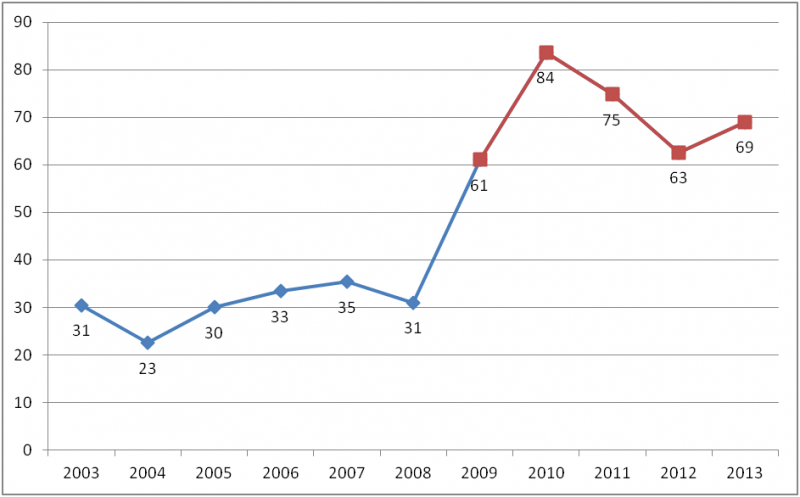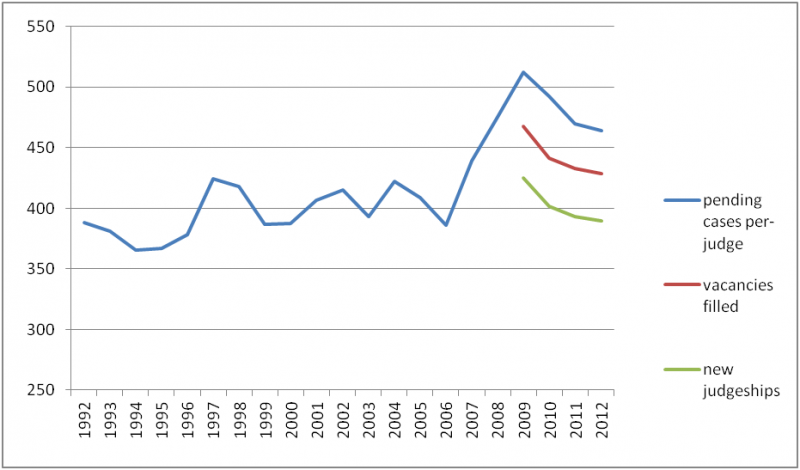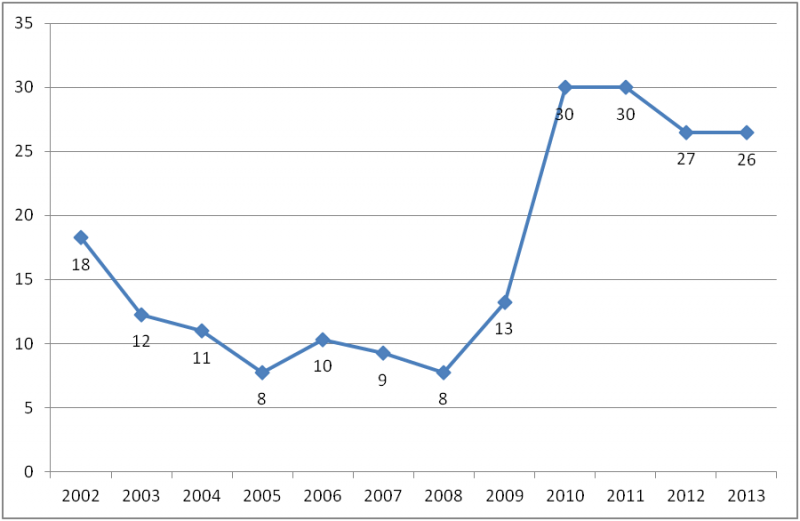Unusually high judicial vacancy levels coupled with unprecedented workloads are burdening federal district courts like never before. Since the Brennan Center first documented this troubling trend in Federal Judicial Vacancies: The Trial Courts in July, the total number of district court vacancies has surged from 65 to 75 open seats, an 11 percent vacancy rate, leaving federal trial courts even more under-resourced. The current vacancy level is substantially higher than what existed at the equivalent point in President Clinton’s second term (55) or President Bush’s second term (35).
For the first time since 1992, the average number of district court vacancies has been greater than 60 for five straight years, from 2009–2013. The 2013 average vacancy level currently sits at 69 vacancies (compared with 66 vacancies on June 1, 2013). The following graph details the average number of district court vacancies since 2003, the last time new judgeships were created:
Annual Average District Court Vacancies 2003–2013

The vacancy gap between President Obama and President Bush’s terms in office highlights this striking contrast with past experience — and the gap has grown even larger since June.
Total Vacancies By Month in Office

Months in Office
High vacancy levels and heavy caseloads are leaving sitting judges with unprecedented workloads. Counting both full-time active judges and part-time senior judges, the number of pending cases per sitting judge reached an all-time high in 2009 and was higher in 2012 than at any point from 1992–2007.
Average Number of Pending Cases Per Sitting Judge, 1992–2012

One way to gauge the severity of the vacancy problem is to examine the number of “judicial emergencies” declared by the Administrative Office of the U.S. Courts. The Office relies upon a variety of measurements to declare an emergency, including the number of filed cases in each district, weighted by an estimate of the relative judge-time, on average, that different case types require. The number of judicial emergencies has grown even further since June, rising from 25 to 29 and bringing the 2013 average to 26.
Annual Average Number of Vacancies Declared Judicial Emergencies, 2002–2013

